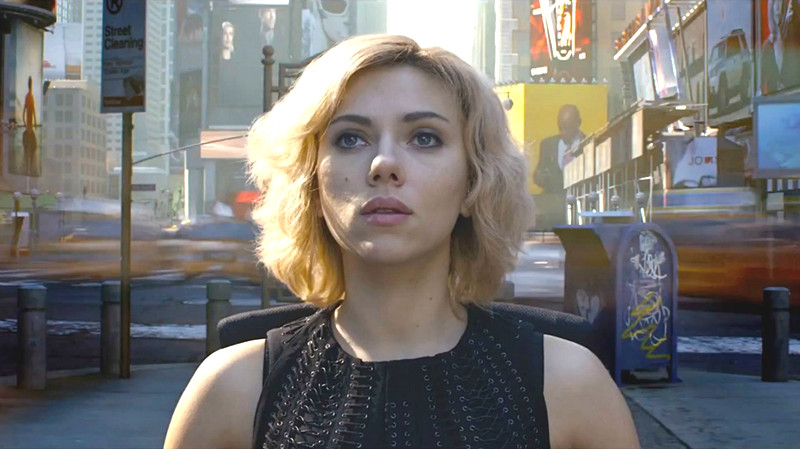
For those who weren’t paying attention last time, guilty pleasure was paraphrased as a film shunned by the critics and/or audience, while liked by this writer, nevertheless. So, you can expect another plate with various kinds of cinematic cheese served.
On this list, there won’t be any exceptions meaning that all the characters are the leading ones. The rules of chronology and subjectivity under control are still valid. And now, let’s have some fun!
1. Bloody Mallory (Julien Magnat, 2002)
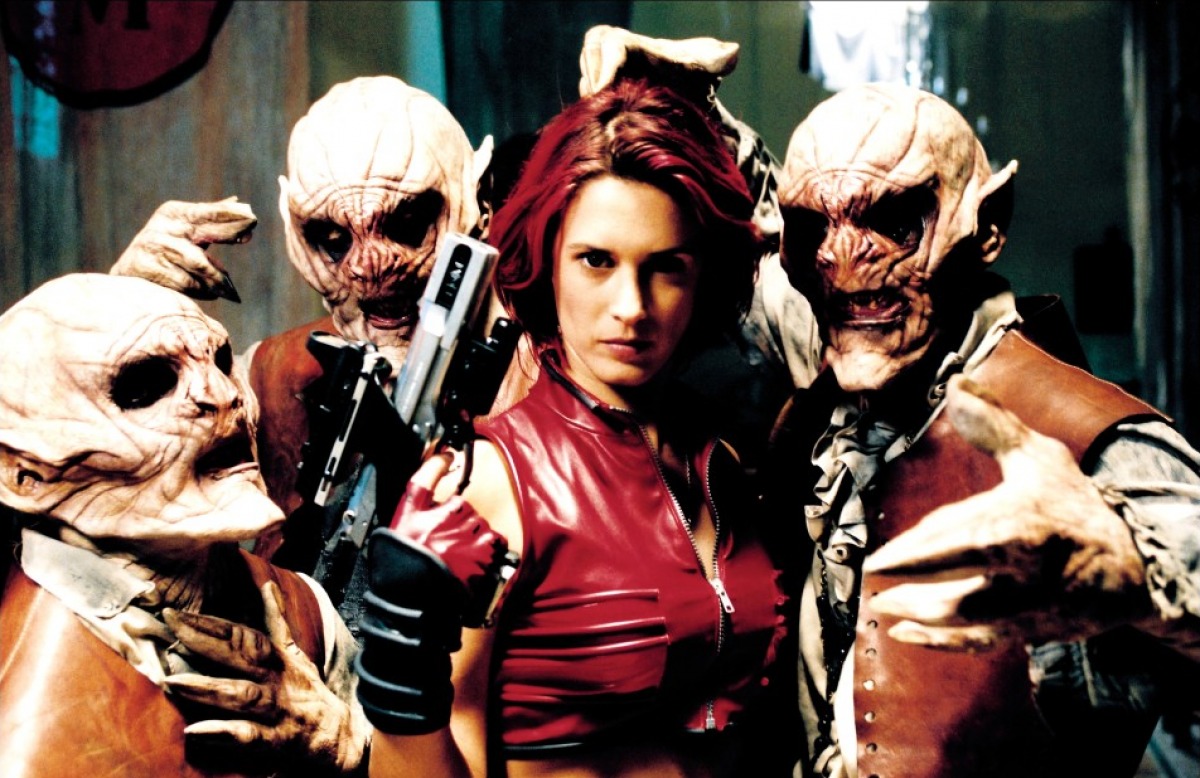
A marriage demands sacrifice and Mallory (Olivia Bonamy) learns that the hard way. On her first wedding night, she is forced to become the evils’ worst enemy by axing her demon-in-human-guise darling (Julien Boisselier) to a bloody pulp. But, their love doesn’t end the moment (his) death do them part, as they keep seeing each other by the power of summoning rituals and marital laws of Necronomicon (which is kind of un-fictionalized in this movie’s universe).
As you might have already guessed, “Bloody Mallory” doesn’t take itself seriously, but that is one of the reasons it’s a blast to watch. With her anticlerical attitude and Franka-Run-Lola-Run-Potente-meets-Milla-The-Fifth-Element-Jovovich looks, Bonamy truly enjoys playing a tough girl with a soft spot for the (romantic) dead hubby.
Her first and last appearance (smeared mascara + wedding dress combo and the elegant widow attire, respectively) seem to be referencing gothic metal bands’ music videos, whereby in the mid-section, she’s more like the anime heroine.
Paying homage to “The Night of the Hunter” with “Fuck Evil” inscription on her gloves, Mallory is great in kicking ghouls’ butts and converting a man of faith to her side by some quality flirting.
On the save-the-pope mission she reluctantly accepts, she is assisted by a drag queen explosives expert, Vena Cava (Jeffrey Ribier), and a mute, pre-teen telepath capable of possessing both humans and animals, Talking Tina (Thylda Barès). On top of that, the campy and colorful visuals are wrapped in Kenji Kawai’s pulsating notes.
2. Underworld (Len Wiseman, 2003)
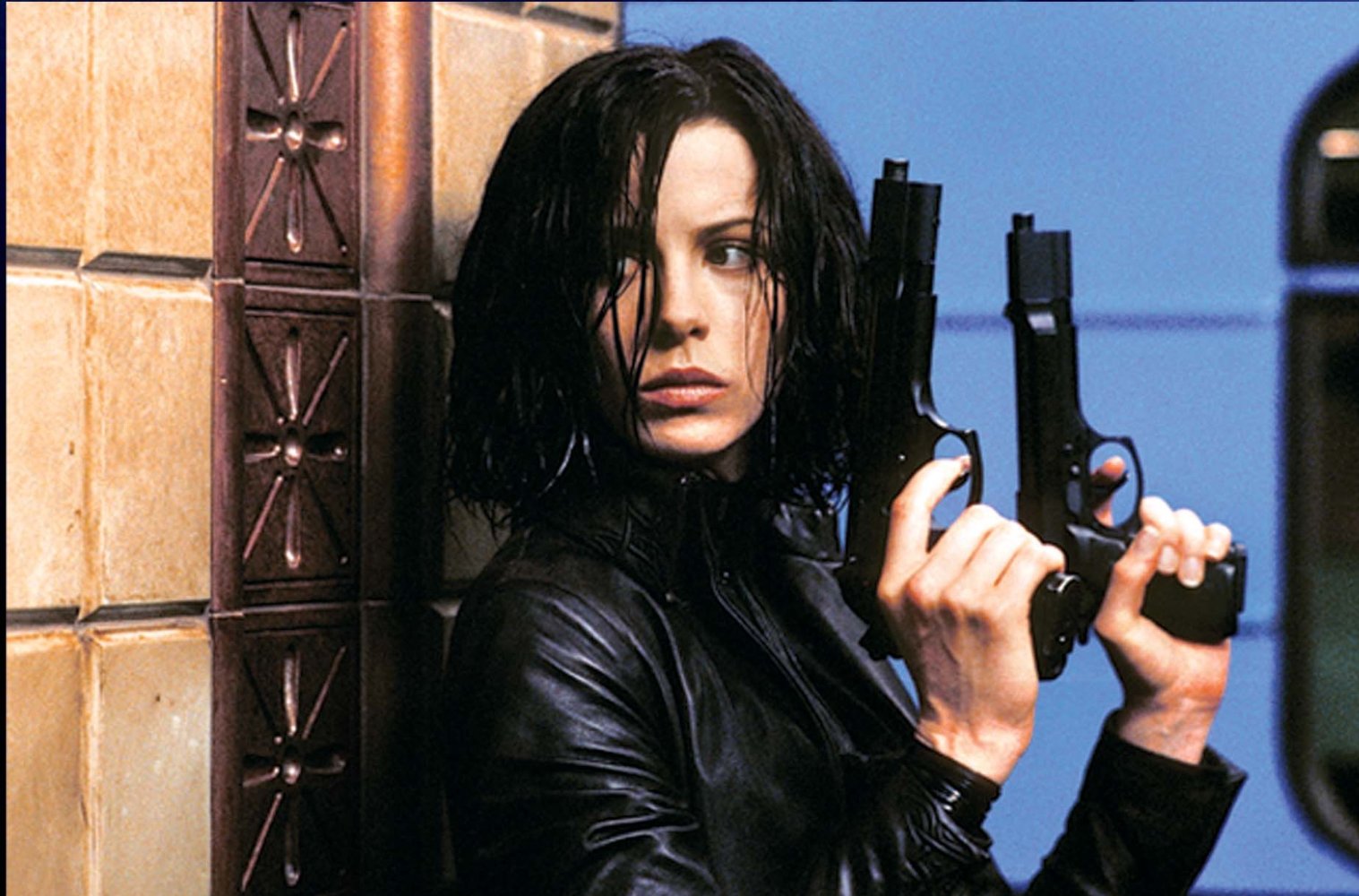
Despite being bashed by critics, Len Wiseman’s debut “Underworld” spawned four sequels to date, but as the subheading suggests, this chapter will focus on the first part of the series. Essentially, it bastardizes vampires and werewolves (i.e. lycans) into a “post-Matrix” urban gothic action-fantasy-thriller that revolves around the centuries-long war between the said species.
In the midst of this nocturnal conflict, we follow a Death Dealer vampiress, Selene (the intelligently hot Kate Backinsale), who gradually learns that her true enemies are not the lycans (allegedly, her family’s butchers) and falls for a man of a “special lineage”.
With a brooding aura, graceful posture, piercing blue eyes (her transformed brethren’s common feature) and commendable fighting and gun-toting skills, she finds herself in a tricky situation of questioning her loyalties and redirecting her anger.
Being bold, defiant, determined and quite emotional for a bloodsucker, as well as having a hunch that someone’s plotting behind her back, she emerges as a winner of a battle in which she has the last laugh – no, better make that decisive sword-cut.
3. Immortel (Enki Bilal, 2004)
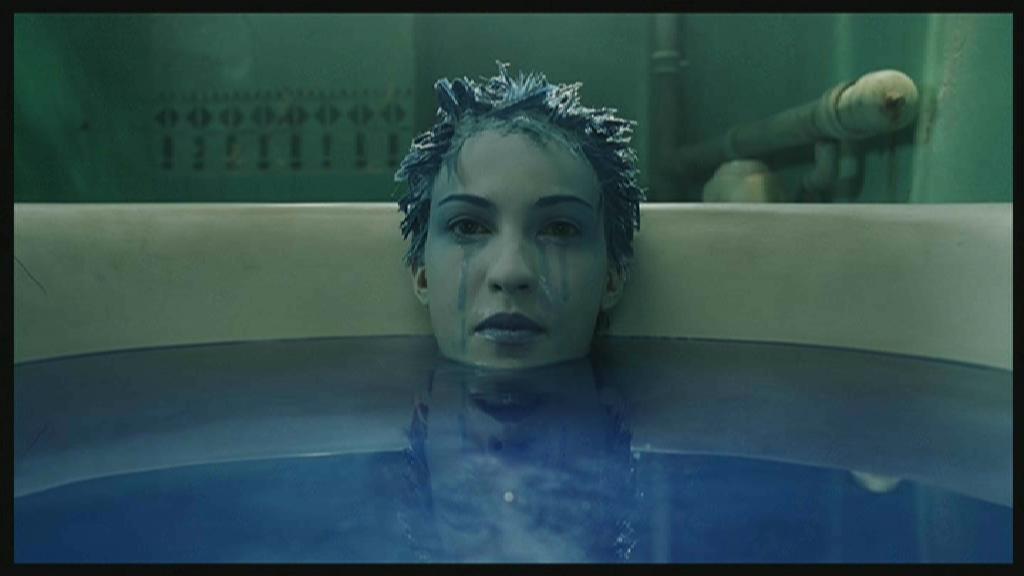
Set in the CGI-ed world of humans, mutants, holographic propaganda, synthetic flesh, virtual brains and Egyptian Gods who like to play Monopoly, “Immortel (ad vitam)” revolves around Jill (the ethereal Linda Hardy) dubbed “the greatest mystery of nature” by her experimenter tutor, Dr Elma Turner (Charlotte Rampling) of notorious Eugenics corporation.
This amnesiac, telepathic, pale-skinned and blue-haired beauty has the body which is, biologically, only three months old (as we are told at one point) and yet, she looks like a twenty-something. With no memories and a masked man John (Doe?) as the only one who seems to know her origins, she “works” as the aforementioned scientist’s guinea pig and is simultaneously chosen by Horus to bear his or rather, his host Nikopol’s (Thomas Kretschmann) child.
“Guided” by three forces and unaware she’s capable of procreating a descendent of a falcon-headed supreme being, Jill is the most passive, but also the most cryptic heroine on the list. (Not to mention her azure tears leave permanent stains on human skin.)
4. Lady Death (Andy Orjuela, 2004)
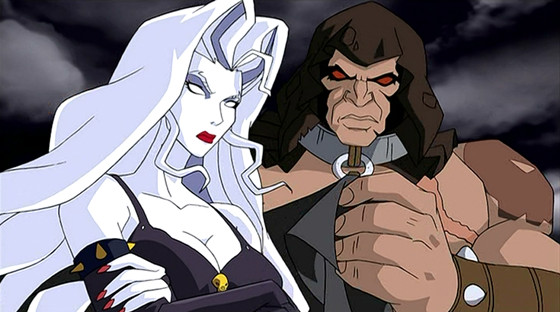
Condemned to death for the sins of her father who is none other than Lucifer in disguise, Hope – a pious girl from the 15th century Sweden – is burnt at a stake. Selling soul by uttering an incantation with her last breath, she arrives at Hell, with her skin and hair restored during the “trip”.
After refusing Lucifer’s offer to join him, she encounters his former blacksmith, Cremator, and going under the name of Lady Death (the voice of Christine M. Auten), gathers and leads an army of rebelled devils against “The Lord of Lies”.
Unlike the original work – the eponymous comic book created by Brian Pulido and Steven Hughes – Orjuela’s adult straight-to-video cartoon (of angular design similar to the DC-comics adaptations) depicts the titular (anti)heroine as less evil, with her blood-soaked tale of vengeance and infernal survival ending on a different note.
Hope’s Heavy Metal-like, horned-steed-riding persona epitomizes fan-service – the longer she stays in the underworld, the skimpier her outfit becomes. (Eventually, her nipples are outlined on the halter top which barely holds her protruding breasts.) However, beneath all that pale, exposed skin, a self-confident nature and strong desire to carry out justice can be easily recognized.
5. Æon Flux (Karyn Kusama, 2005)
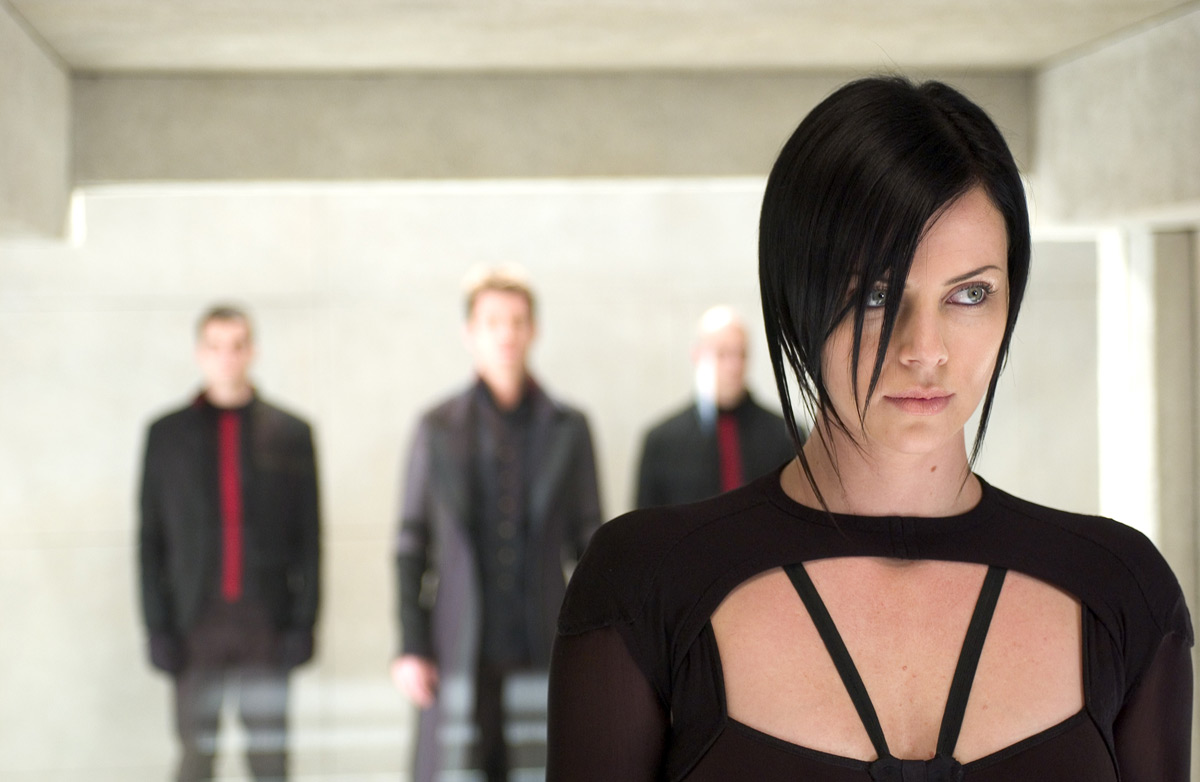
In the year 2415, Aeon Flux (Charlize Theron who lends a certain gravity to her character) is the owner of the most powerful eyelashes in the universe – in a blink of an eye, she’s capable of catching a fly (the most obvious reference to Peter Chung’s original animated series).
A member of the underground organization called the Monicans, she lives in a dystopian, virus-survivors’ society masked as its opposite – urbanistically and architecturally attractive utopia of Bregna (represented by some impressive locations of Berlin and Postdam).
Her sister Una’s death is the last drop that makes the cup (of deceit) run over – it intensifies her anger towards the mendacious government, so she accepts the mission of assassinating their leader, Trevor Goodchild (Marton Csokas), without any hesitation. However, things don’t go as planned, despite Aeon’s smooth, acrobatic moves and exceptional fighting skills which render the baddies easily disposable. Dealing with emotional obstacles, she gradually reveals the truth.
Theron’s magnetic presence and a few mildly surreal flourishes slightly elevate “Æon Flux” above your average and simplified Hollywood remake. It is far from reaching the experimental heights of the 90s show, but on the other hand, it’s not as bad as metascore suggests.
6. DOA: Dead or Alive (Corey Yuen, 2006)
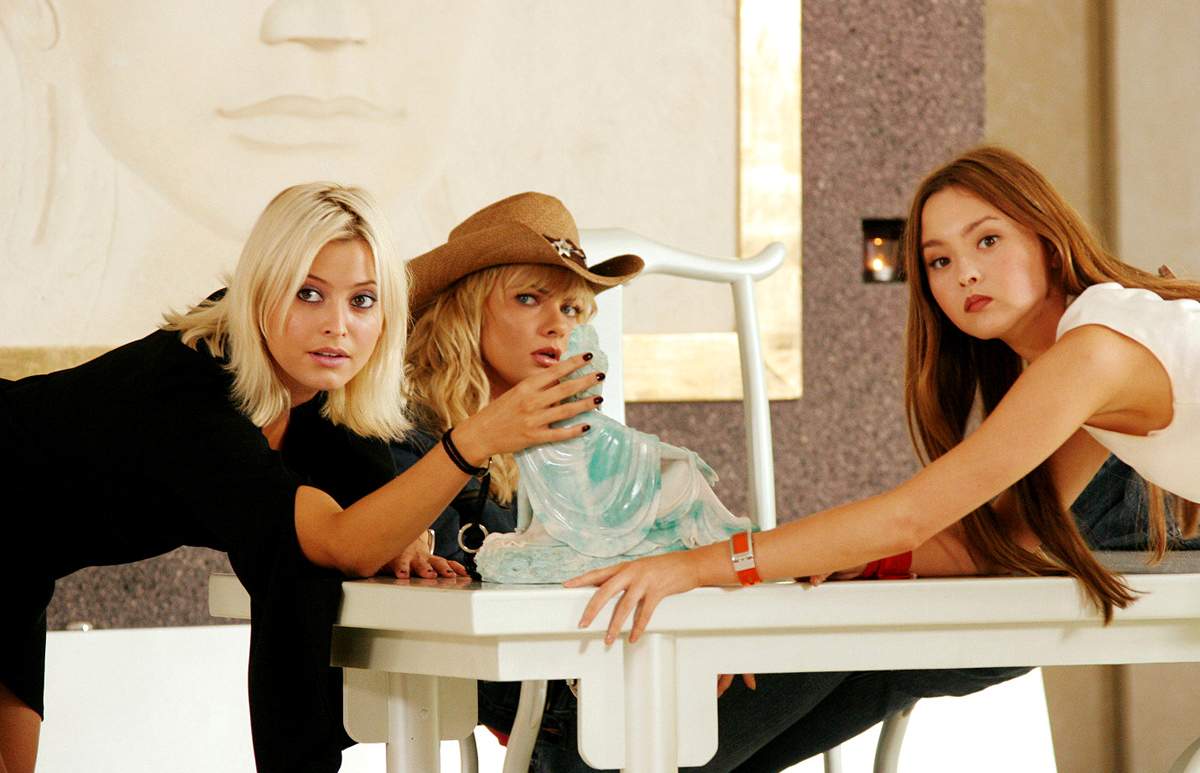
Whether animated or live-action, fighting games adaptations tend to be trashy and “DOA: Dead or Alive” based on Tecmo’s 3D franchise is no exception. But, if you send your brain to La La Land (not the overrated one) and recline in your armchair, this hot-babes-meet-martial-arts extravaganza might bring a smile to your face.
Taking cues from “Enter the Dragon”, “Mortal Kombat”, “Charlie’s Angels”, as well as from anime such as “Battle Arena Toshinden” and “Street Fighter II: The Animated Movie”, Yuen’s story starts with a determined ninja-princess, Kasumi (the cute Devon Aoki), leaving her clan and becoming a renegade. Looking for her missing brother, Hayate (Collin Chou), she enters the titular tournament.
Together with a pro-wrestler (setting out to prove she’s not a fake), Tina (Jaime Pressly), a cunning thief and assassin, Christie (Holly Valance), and the late DOA founder’s daughter, Helena (Sarah Carter), she’s about to put an end on the villainous Dr Victor Donovan’s (Eric Roberts) schemes (and, of course, find her sibling). Excellent both solo and in tag team mode, Kasumi is the master of acupuncture, katana and bamboo sticks, as well as an avid hang-glider.